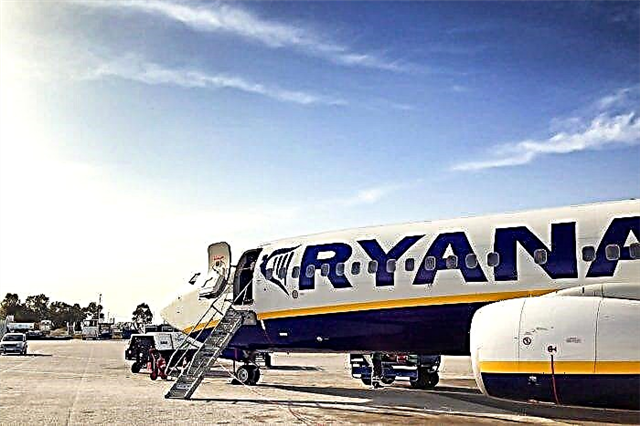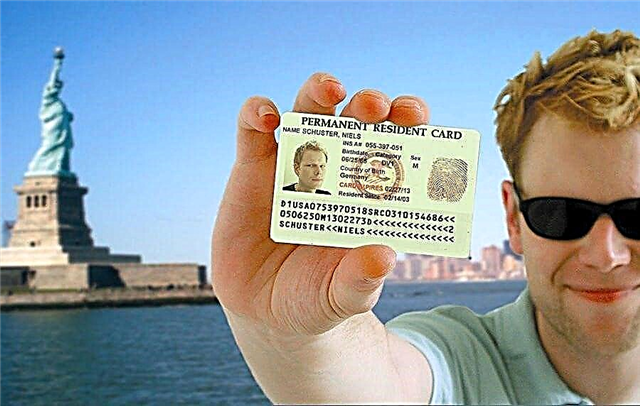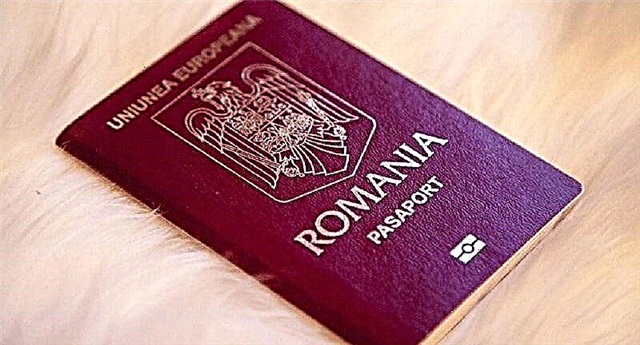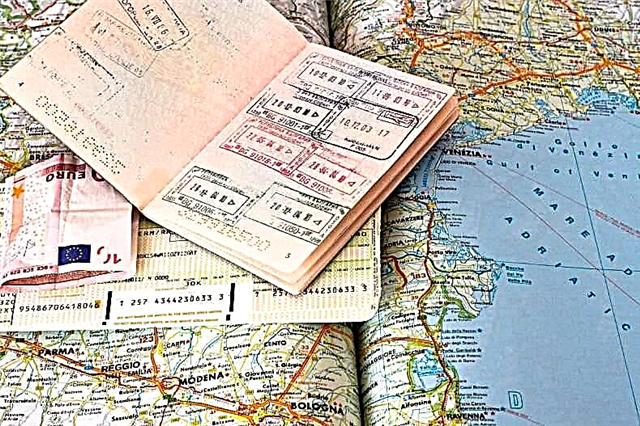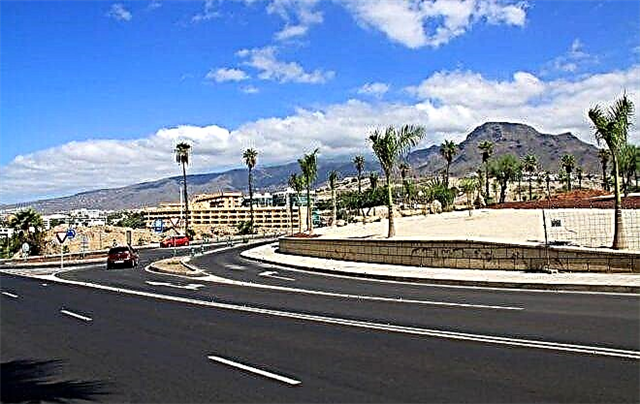Moving around Spanish territory by car is a guarantee that your vacation will be complete and comfortable. Some tourists come here by their own cars, others prefer to rent them. But whatever the solution to this issue, it is important to know that roads in Spain are divided into several categories, and 10% of their total length are toll highways.

What you need to know about Spanish roads
The roadmap for the Kingdom of Spain is quite extensive. All tracks were built on historically formed paths, so the network developed in stages and somewhat chaotic. The only exception is the autobahns, which were built as part of the program for the development of the country's transport system.
Most of the highways originate in Madrid. Some coastal regions can also boast of them.
That said, you should take into account the mountainous terrain of Spain, thanks to which many highways are rather winding and often offer travelers steep descents and ascents. Hard-to-reach regions of the country are connected by numerous tunnels and bridges.
All highways in this area can be roughly divided into three groups:
- paid (autopistas) - have several directions, are indicated on the signs with the letters AR, differ in the presence of multi-level interchanges and a small number of sharp turns. The speed limit is 130 km / h, although many allow themselves to increase it to 140 km / h. However, due to the large number of cameras and radars, it is best not to do this;
- free (autovías) - located mainly in the suburbs of large cities and perform the function of bypass roads. Some of them are laid in underground tunnels and mines. As a rule, a free road differs from a toll road at a lower speed;
- national significance - these roads are characterized by a significant speed limit. Driving on them is allowed in both directions. Cross the Spanish cities, towns and villages, mountains, beaches, fields encountered on the way. In fact, these are the roads that have been here at all times, but over the years have been updated and tied to high-speed autobahns.
The last group of roads promises a more pleasant journey. As a rule, they do not have fences, and therefore make it possible to admire the beauty of the local landscapes. If you came here as a tourist, rented a car and want to see everything that the country is so famous for, then form a route along these routes.
It should be borne in mind that the first two types of highways significantly save time due to the accelerated movement along them.
The fastest highways in the country are:
- M-50 - connects the R-2 highway in Madrid and the northern A-1;
- AR-41 - toll road connecting Toledo and Madrid;
- The A-45 is a free highway between Malaga and Cordova.
The two main highways along the Mediterranean coastline are the A7 and A2. At the same time, the second one runs closer to the seashore in the Costa Brava region, so it is more convenient to get to any resort town in this region along it. If you need to cross the country quickly from Barcelona to the French border, choose the A7.
As you head south, you should be aware that both of these roads are mirror images of each other and only 100 km from Barcelona do they begin to diverge. For this reason, when approaching the Catalan capital, you need to be extremely careful not to miss the desired exit. Otherwise, you can go in a completely different direction.
The road map in the kingdom is in less and less demand, in most cases due to the fact that when renting a car, many companies give their customers a navigator. For this, however, you will have to pay as for a separate service.
Therefore, to help you save some money, we suggest using a detailed map of all Spanish highways. It comes in handy if you want to plan the route of your trips around the country in advance.
There is no way to avoid traffic congestion in Spain. However, if you know where and when the main congestion of cars occurs, they can be successfully bypassed.
Most traffic flows near large settlements occur on weekdays. Usually it is 7.00-10.00 in the morning in the direction of the city entrance. In the evening, the same situation is observed from 19.00 to 21.00, but already at the exit from the village. If you get stuck in a traffic jam at this time, you can be guaranteed to spend a couple of hours in it.
For the weekend, it is better to leave the city either early in the morning or in the afternoon, since everyone tries to leave in the morning. It is better to plan to return home on Sunday before 5 pm, otherwise you may find yourself in a traffic jam later.
Toll tracks
The amount of money that will have to be set aside to travel on a particular highway depends on several factors:
- vehicle types;
- seasons (there are different rates in summer and winter);
- time of day (day or night);
- tracks.
Therefore, when choosing a route to follow, it will be useful to study on the map how to get from one point to another. The fact is that it often happens that a toll road runs parallel to a free one. In this case, you can save a lot.
The leader in the number of toll roads is Catalonia - about 633 km. It is followed by Valencia - 367 km, then Galicia - 327 km. But in Northern Asturias, only 22 km of roads are toll.
The fare for such routes is given in the table:
| Road | Start and end point, distance in km | Price in EUR |
|---|---|---|
| AR-1 | Burgos - Arminion (84) | 12,25 |
| AR-2 | Zaragoza - AR-7 (225) | 24,15 |
| AR-4 | Seville - Cadiz (95) | 7,30 |
| AR-6 | Madrid - Adanero (74) | 12,50 |
| AR-7 | A-9 (France) - Barcelona (156) Barcelona - Valencia (347) Valencia - Alicante (178) Cartagena - Vera (228) Malaga - Guadiaro (105) | 14,45 36,85 17,30 14,15 4,70 |
| AR-8 | A63 (France) - Bilbao (105) | 5,35 |
| AR-9 | Ferrol - A3 (Portugal) (196) | 20,40 |
| AR-15 | Tudela - Irursun (112) | 5,55 |
| AR-36 | Ocaña La Roda (150) | 15,70 |
| AR-41 | Madrid - Toledo (60) | 7,65 |
| AR-51 | Villacastin - Avila (26) | 1,45 |
| AR-53 | Santiago de Compostela - Dawson (57) | 5,90 |
| AR-61 | Segovia - AR-6 (28) | 2,45 |
| AR-66 | Campomanes - Leon (78) | 13,15 |
| AR-68 | Bilbao - Zaragoza (298) | 32.30 |
| AR-71 | Leon - Astorga (43) | 5,05 |
| R-2 | Madrid - Guadalajara (59) | 7,00 |
| R-3 | Madrid - Arganda del Rey (39) | 4,50 |
| R-4 | Madrid - Osuna (58) | 10,45 |
| R-5 | Madrid - Navalcarnero (28) | 4,70 |
| S-32 | Mongat - Palafols (57) Castelldefels - Vendrell (49) | 4,82 5,21 |
| S-33 | Barcelona - Montmelo (29) | 1,63 |
All the rates shown apply to motorcycles and cars and are relevant for the summer season. Please note that the quoted prices may be slightly higher during peak hours.
Moreover, the greater the distance, the higher the tariff. For example, to get from Marbella to San Sebastian or Bilbao, you will have to plan a considerable budget.
At the same time, the distance from Madrid to Guadalajara and to Osuna is about the same, and the difference in the cost of travel on the highway will be a little more than 3 euros.
When entering a toll highway, you will be warned several times that there is a toll road ahead. Moreover, you will be offered free detours. If you are in no hurry, take this opportunity.
This is especially true for those traveling to Andalusia and Catalonia, where there are a huge number of scenic spots that can be admired from observation platforms.
There are several ways to pay for using the toll road. On some of them this can be done at the entrance, on others - at the exit.
Approaching such a highway, you will see that it is divided into many lanes. Above each of them is an indication of how exactly you can pay.
The options are as follows:
- payment through the TeleTAC system. It allows you to make a payment remotely. For this, a special device is installed in the car. Most often it is used by local residents;
- only by card;
- by card or cash;
- through operators.
The last option is the safest for those who doubt themselves. And if you couldn't figure it out, there is always an operator call button on the turnstile.
On many phones you will see a 3+ button. If you have more than three passengers in the cabin, feel free to click on it. A little later, the system will recalculate your payment, make a discount and return the difference to your card, provided that you paid with it.
Traveling through toll tunnels
It will also cost you a certain amount of money to drive this or that section of the path through the tunnel:
- Tunnel Cadi - located in Catalonia, Barcelona province. Its length is 5 km. The year of opening is 1984.
| Vehicle | Price in EUR |
|---|---|
| Any kind of motorcycles | 9,52 |
| Cars minibuses 4-wheel vans for up to 9 passengers with or without towing a trailer with two wheels trucks and buses | 11,82 |
| cars, vans, vans with or without towing a trailer with two wheels trucks or buses with 4 or more wheels | 25,79 |
| passenger cars and vans with 4 wheels up to 9 passenger seats with a trailer with 4 wheels, of which at least one pair of twin wheels. | 30,93 |
- Tunnel Vallvidrera - its length is 2.5 km, it is also located in Catalonia.
| Vehicle | Price in EUR | Price in EUR at rush hour |
|---|---|---|
| Any types of motorcycles | 2,94 | 3,31 |
| Passenger cars, vans with 4 wheels (single-axle trailer, towed or not), minibuses | 3,78 | 4,25 |
| Four-wheeled vans and buses | 5,94 | 6,68 |
| Passenger cars and four-wheeled vans with a four-wheeled trailer, or with one pair of twin wheels | 7,88 | 8,87 |
Traffic rules on the roads of Spain and fines for their violation
Regardless of whether you have to rent a car in Spain or you intend to come here on your own, in any case, you need to know what traffic rules apply on the roads in this country:
- documents: driver's license (for foreigners it is best of all international standard + national rights), technical passport for a car, insurance;
- all persons in the car must wear seat belts;
- transportation of children is allowed only in special chairs appropriate for their age;
- using a mobile phone is prohibited. The handsfree system must be connected to the speakerphone;
- the permissible alcohol intake is 0.5 ppm for experienced drivers; if the driving experience is not more than 2 years, then 0.3 ppm;
- speed control is carried out by cameras and radars. Most often they are installed on the back of a sign placed above the road;
- you can use low beam only in tunnels;
- speed on highways - 130 km / h, in the city - 40 km / h, outside - 80 km / h.
It is prohibited to install anti-radar equipment in the car - the fine for its use is 200 euros.
Drunk driving will cost 5,000 euros. The same amount will have to pay pedestrians who will cause an accident.
You can pay the fine on the spot with a 50% discount. However, in this case, the driver is deprived of the opportunity to appeal the claim if he does not agree with it.
For more details on what you need to know about driving on Spanish highways and how violation of the rules is punished, see the article "Traffic Rules in Spain".
Gas stations
The Spanish road, whether toll or not, usually has very good coverage and numerous areas where you can rest, wash and refuel. A gas station is usually a whole complex that includes a store, a cafe, an automatic car wash.
When refueling, you must first pay for the required amount at the checkout, and then return to the car and insert the pistol into the gas tank. Most gas stations are self-service.
Two years ago, the famous Spanish network Repsol developed its own mobile application that allows you to make payments at more than 300 gas stations remotely.
Parking
Spanish traffic rules strictly regulate the issue of where, when and for how long you can leave your car. Moreover, the rules affect not only the time of day, but also the day of the week and even certain days during the month. In some areas of the city, you can leave your car during business hours only with a special permit.
In settlements, parking is carried out on even days on the even side of the street, on odd days, respectively, on the side where the houses with odd numbers are located.
Violation of parking rules threatens not just with a fine - the car will be taken to the impound parking lot.
All parking areas are painted in specific colors. At the same time, parking in the yellow zone is prohibited. Blue are paid parking lots equipped with parking meters. But you can leave your car there for only a few hours. The most successful option is underground parking.
Conclusions
The most convenient way to travel around Spain is by car. But in this case, you will have to familiarize yourself not only with the traffic rules, but also with the features of the entire road system.
All tracks here are divided into free, paid and nationally significant. The main difference is the speed of movement on them and the arrangement.
Toll highways most often have a special fence and allow you to reach speeds of up to 130 km / h.
But in order to admire the Spanish landscapes, you should choose the roads that run through cities, villages, beaches and fields. They are most often free, but the speed of movement on them should not exceed 80 km / h outside the village.


